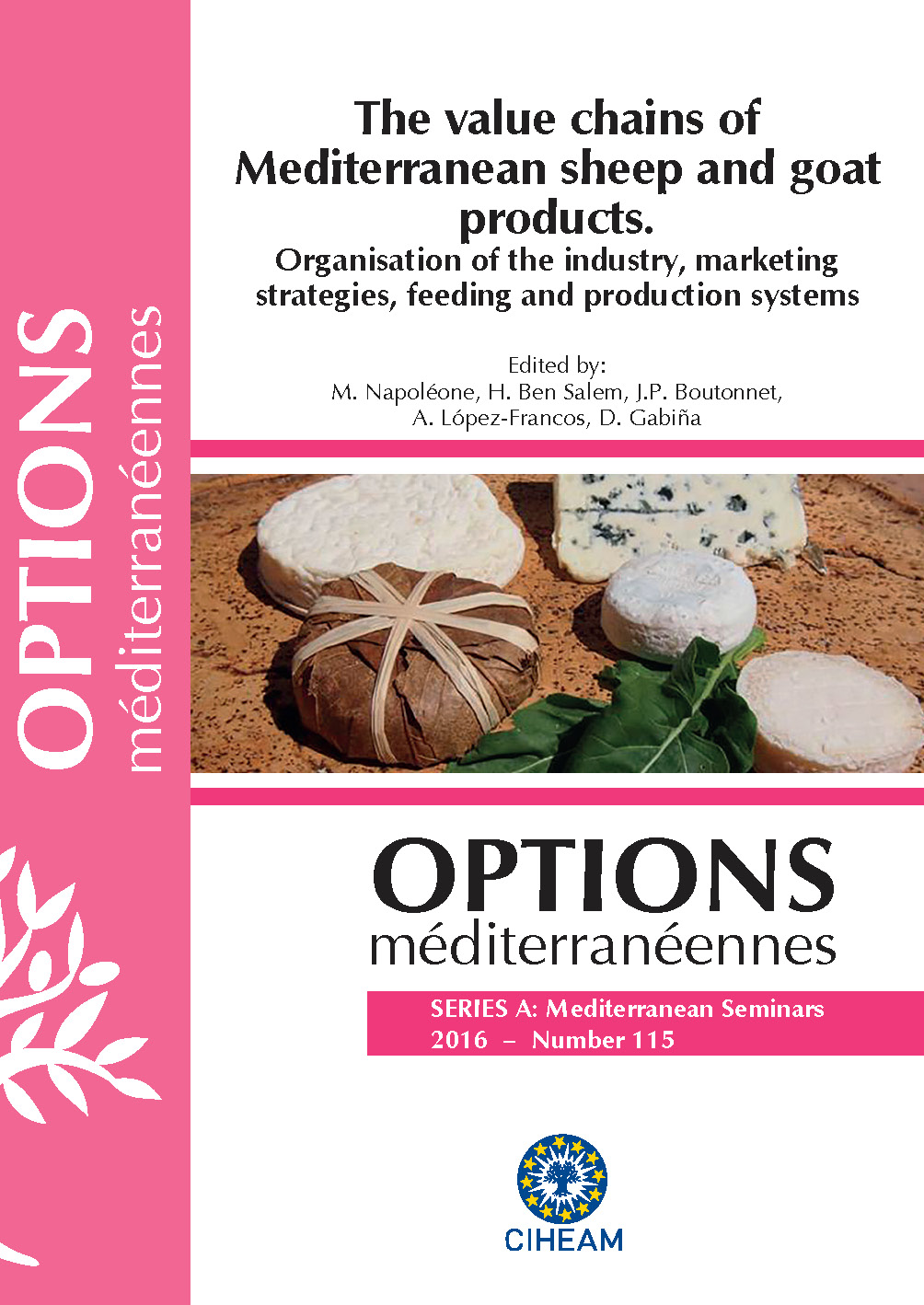| Article précédent | p. 655-659 | Article suivant |
Transhumant sheep and goat farming and the use of rangelands in Greece
The transhumant sheep and goat farming system has a dynamic and multidimensional character which is manifested through its social, economic and environmental impact. Concerning its environmental role, the system contributes substantially to safeguarding biodiversity, as well as to the formulation of the structure of grazed rangelands, influenced by the different nutritional habits of the animals. The purpose of this paper is to provide an overview of rangelands used by small transhumant ruminants in Greece, alongside with the main structural characteristics of the system. For each Greek region the areas grazed by transhumant flocks are presented along side with the area grazed by non-transhumant sheep and goats, categorized by altitude. The results demonstrate the importance of transhumance in the management of pseudoalpine rangelands, but also in the lowlands. The design of an integrated land use strategy is essential for the Greek livestock sector, especially under the light of the new Common Agricultural policy, and transhumance should be an integral part in designing effective rangeland management schemes.
Le système d’élevage d’ovins et caprins transhumants présente un caractère dynamique et multidimensionnel qui se manifeste à travers son impact social, économique et environnemental. Concernant son rôle environnemental, le système contribue de façon substantielle à sauvegarder la biodiversité, ainsi qu’à la configuration de la structure des parcours pâturés, influencée par les différentes habitudes nutritionnelles des animaux. Le propos de cet article est de présenter une révision des parcours utilisés par les petits ruminants transhumants en Grèce, ainsi que les principales caractéristiques structurelles du système. Pour chaque région de la Grèce, les zones pâturées par les troupeaux transhumants sont présentées en même temps que les zones pâturées par les ovins et caprins non transhumants, classés en catégories selon l’altitude. Les résultats démontrent l’importance de la transhumance pour la gestion des parcours pseudo-alpins, mais aussi des terres basses. La conception d’une stratégie intégrée d’utilisation des terres est essentielle pour la filière grecque de l’élevage, en particulier à la lumière de la nouvelle Politique Agricole Commune, et la transhumance devrait être une partie intégrante pour la conception de schémas effectifs de gestion des parcours.
- [ Afficher ]
- [ Télécharger ]
- [ Exporter la citation ]
Vous pouvez télécharger la citation au format :
- [ Imprimer ]
-
Mots-clés
ELEVAGE EXTENSIF, PAYSAGE, PRAIRIECiter cet article
Karatassiou M., Galidaki G., Ragkos A., Stefopoulos K., Sklavou P., Parissi Z.M., Lagka V. Transhumant sheep and goat farming and the use of rangelands in Greece. In : Napoléone M. (ed.), Ben Salem H. (ed.), Boutonnet J.P. (ed.), López-Francos A. (ed.), Gabiña D. (ed.). The value chains of Mediterranean sheep and goat products. Organisation of the industry, marketing strategies, feeding and production systems. Zaragoza : CIHEAM, 2016. p. 655-659. (Options Méditerranéennes : Série A. Séminaires Méditerranéens; n. 115). Joint Seminar of the Subnetworks on Nutrition and on Production Systems of the FAO-CIHEAM Network for Research and Development in Sheep and Goats, 2015/06/16-18, Montpellier (France) . http://om.ciheam.org/om/pdf/a115/00007348.pdf



